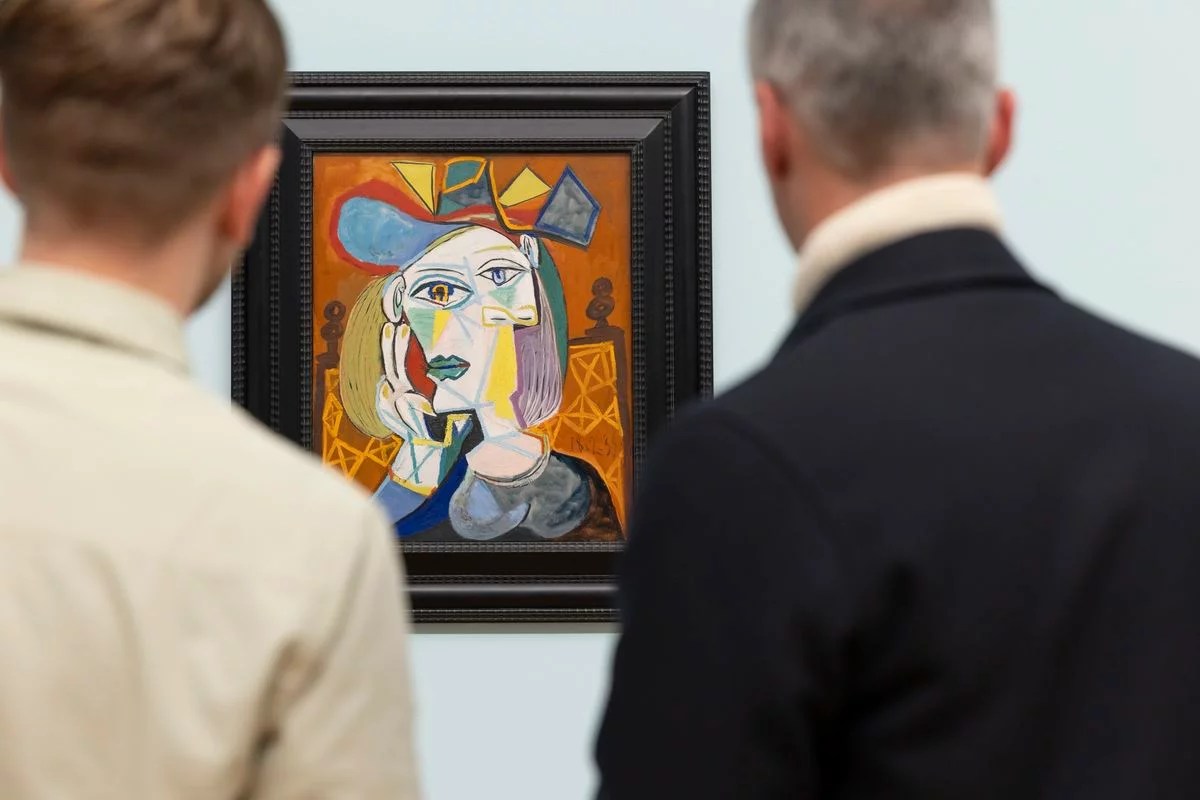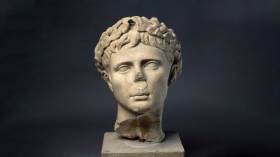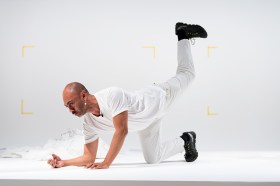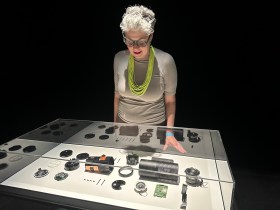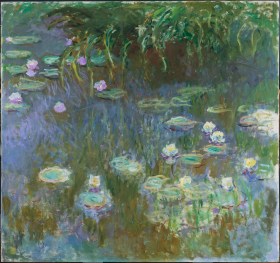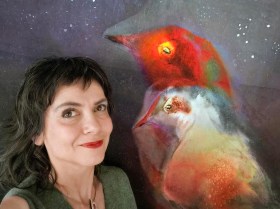The story of the National Gallery of Australia’s (NGA) latest blockbuster exhibition, Cézanne to Giacometti: highlights from Museum Berggruen/Neue Nationalgalerie, starts with a frustrated artist. Off the back of repeated rejection in the latter part of the 19th Century, Paul Cézanne refused to conform with dogmatic forms of composition that exemplified European art. Instead of classical, literal figures we find in Cézanne’s oeuvre a depiction of what it is like to perceive with glimmers of movement, memory and emotion.
What results is a collection of paintings – some of which are left partially blank because Cézanne abandoned many in frustration – that are asymmetrical, moody, and interesting. The work, Young woman with her hair unfastened (c. 1873/74) exemplifies this new mode of seeing. An impressionistically rendered woman slants diagonally across the canvas against a muddy green backdrop and the hint of bathwater in the foreground.
Cézanne to Giacometti contends that Cézanne’s brave experimentation in representation had a significant ripple effect across continents to bring energy to the new modernist movement. Drawing on 170 works from both Berlin’s Museum Berggruen and the NGA’s own collection, the exhibition maps out a decades-long conversation of modern ways of seeing.
As Cézanne’s work was disseminated in Australia through travel, reproductions, and written accounts in newspapers, the exhibition shows how Cézanne influenced local artists from the early 1900s onwards. The works of Grace Cossington Smith, in pieces such as Landscape, Sea Wave (1931) and Eastern Road, Turramurra (c. 1926) have non-linear and slanting movements, and a high sensitivity for the geometric structure that underpins objects in the world. The juxtaposition of Cézanne alongside later Australian efforts allows the viewer to see how the themes of modernism took shape and reverberated. It also showcases some Australian innovations in this movement: vibrant energies, and the pastel palettes of the landscape.
The exhibition then flows to examples of cubism featuring works from Pablo Picasso, Dora Maar and Georges Braque alongside Australian cubists, Dorrit Black, Grace Crowley and Anne Danger; then the abstracted, child-like geometries of Paul Klee. There is strong consideration of the Bauhaus movement, in its clean, satisfying geometries and the ways Bauhaus was interpreted in Australia by the German-born artists, Ludwig Hirschfeld Mack and Inge King alongside textile artist, Marcella Hempel. Cézanne to Giacometti explores the dynamic, bold use of colour and shape in the works of Henri Matisse, positioned alongside the vivid compositions of Australian artists Charles Blackman, and Rosemary Madigan.
The final room showing works from Berlin features slender, solemn sculptures of figures by Alberto Giacometti which takes the experiential mode of perceiving forwarded by Cézanne and channels it towards an experiential consideration of what it feels like to be in space. Shirking representational sculpture, Giacometti adds height and reduces the heft of the human subject, allowing the frail, looming figures to be seen from a distance.
In response to the exhibition, the NGA also features an interactive, immersive set of works by contemporary Australian sculptor Sanné Mestrom. Visitors are invited to shift their perspective to the female form by viewing the works through multiple perspectives – as well as through touch – creating a dissonant experience of looking at an image on the wall while also feeling that image on a surface below. It also features an abstract rendering of the form of the mother accessible as a physical play space, cleverly echoing Giacometti’s interest while applying it anew to the question of female embodiment both as an individual who exists in space, and as a connected being.
Read: Exhibition review: Lucy O’Doherty: The Drifting Place, China Heights Gallery, Sydney
Cezanne to Giacometti provides a highly contextualised, thoughtful, and conversational story of 20th century art where artists were redefining what was possible in terms of colour, perspective, form and structure. It provides a remarkable opportunity for visitors to experience the new possibilities awakened in both European and Australian art over an unprecedently innovative time in history.
Cezanne to Giacometti: highlights from Museum Berggruen/Neue Nationalgalerie is showing from 31 May – 21 September 2025 exclusively at the National Gallery of Australia.
Exhibition organised in partnership with Berlin’s Museum Berggruen / Neue Nationalgalerie.
National Gallery Curators: David Greenhalgh, Curator, International Art, Deirdre Cannon, Assistant Curator, Australian Art and Simeran Maxwell, Curator, Australian Art.
Museum Berggruen Curators: Dr Gabriel Montua, Head of the Museum Berggruen and Natalie Zimmer, Curator, Museum Berggruen.

